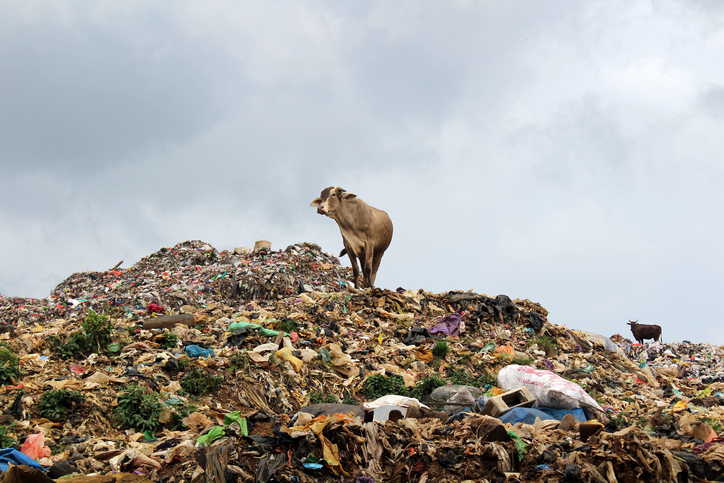Many policy-makers in middle-income countries worry that imports from China might undermine their efforts to develop robust manufacturing sectors. This column discusses evidence on the impact of Chinese import penetration in South Africa’s manufacturing sector. It explores how firms there can respond most effectively to intensifying competition with what is the country’s largest trading partner, and the levers of industrial policy that can support firms’ investments in developing their capabilities.
China’s growing edge in export manufacturing has given rise to concerns in other emerging countries seeking to develop robust manufacturing sectors. Furthermore, China’s recent transition from a producer and exporter of lower-tech products, such as footwear, to more medium- and high-tech intermediate components and final goods has strengthened these concerns. This is especially true for middle-income countries trying to build or retain competitive advantage in more technologically advanced sectors.
South Africa, a major middle-income country, is a good example. Since the end of apartheid, the country has experienced increasing integration into the global economy alongside intensified competition from China, which in 2009 became its first commercial partner. This process has gone hand-in-hand with severe unemployment, poor growth performance, and premature deindustrialization.
Despite concerns that competition from Chinese imports may play a role in shaping the performance of manufacturing firms in South Africa, this issue has never been studied until now. The release of new company data collected by the South African Revenue Service gave us the opportunity to conduct the first evidence-based analysis on the issue.
Between 2010 and 2017, direct exposure to Chinese imports in South Africa’s manufacturing sector grew rapidly: from 5% of total domestic consumption to over 8%. This increase has negatively affected employment growth, sales growth, and the survival rate of South African manufacturing firms. Over this period, every percentage point increase in Chinese import penetration was associated with a decrease in annual firm employment growth and sales growth of approximately 1.3 and 1.4 percentage points respectively.
We have carried out a detailed analysis of the extent to which Chinese import competition has a systemic impact on the South African productive economy, and more specifically, propagating from one firm to another. According to our estimates, increasing Chinese imports among a firm’s downstream clients also contribute to firms’ deteriorating performance, mainly through reduced domestic procurement.
Given the different characteristics of firms, we also checked if Chinese import penetration is associated with similarly negative impacts across different types of firms. We compared two main groups, finding that firms that invest in capabilities development – such as new machinery, royalties and patent rights, training, and research and development – tend to be more resilient to Chinese import penetration than firms that do not. In fact, the less that companies invest, the greater their chances of a shutdown resulting from Chinese import penetration.
But while firms that invest in capabilities development do relatively better, they are only able to mitigate the negative impact of Chinese import penetration to a limited extent. This result points to four related dynamics:
· First, capabilities development and accumulation take time and require scale-appropriate and sustained investments.
· Second, in South Africa, there are a limited number of firms investing in capabilities, which means that firms not investing do not benefit from other firms specializing in complementary capabilities and diversification.
· Third, given their small scale, domestic orientation, limited access to industrial finance, suppliers along the chain cannot immediately benefit from their investments when their market shrinks due to crowding out by Chinese imports.
· Finally, non-technological constraints (such as limited access to credit and export finance) are potentially relevant for South African firms seeking to build resilience and competitiveness in light of increasing import penetration from the Far East.
Nevertheless, our estimates reveal that the increase in Chinese import penetration between 2010 and 2017 can be blamed for only around 4% of the loss in manufacturing-wide firm employment and sales growth in the South African formal sector. The effects of import competition are thus intertwined with the long-term structural problems of the South African production system. The specific weaknesses of some firms along domestic value chains enhance the risks overall and limit possibilities for mitigating them.
Our initial analysis points to the importance of coordinated reactive investments in capabilities development to reduce the negative impacts of import-related competitive pressures. Indeed, these investments ultimately lead to strategic responses by domestic firms, such as product differentiation, lateral migrations into other market segments, functional specialization, and upgrading to high-value added activities.
But the extent to which companies can capture the return from these investments will also depend on the extent to which the broader structural weaknesses of the South African production system are addressed. Over the coming years, focused industrial policies are needed to shape the strategic engagement of South Africa with its largest trading partner, China.







